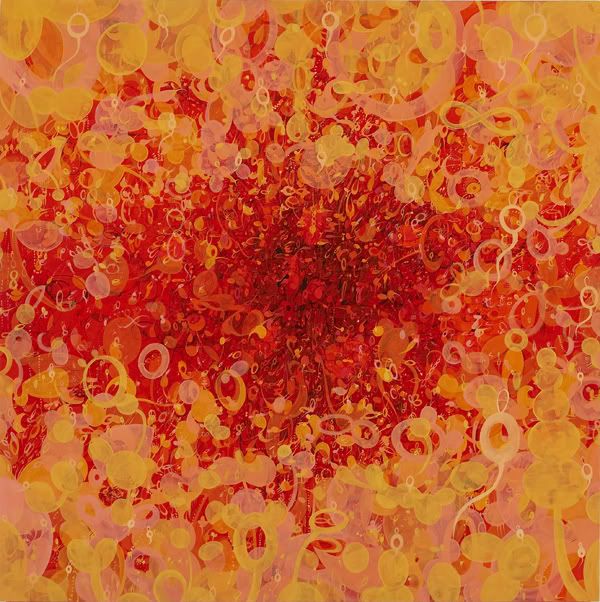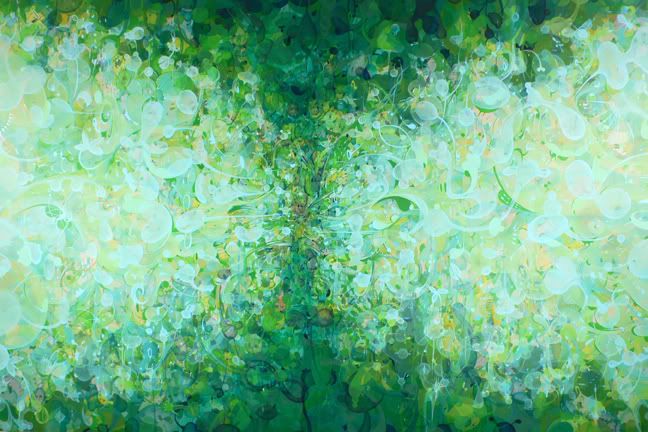
Aurora Robson
"Shebang"
2007
Oil on panel
36 x 36 inches
There are at least seven strong works included in Gallery Satori's "Unreal City" exhibition (on view through July 27th). Among others, I was engaged by Jeremiah Teipen's basement smoke and light show ("Nothing, and everything"), Carlos Roque's aural-sculpture ("Sonic Architecture"), and two of Ha Rhin Kim's acrylic on mylar works, but Aurora Robson's "Shebang" resonated intensely.

Aurora Robson
"Polaris"
2007
Oil on panel
36 x 36 inches
The saturated color, layered surface and energetic, sensuous arabesques bring to mind the work of Brazilian painter Beatriz Milhazes, but where Milhazes is content to dwell in decoration, Robson embraces a more experiential magic, one that springs from an awareness of the ether.

Aurora Robson
"47 Society"
2006
Oil on panel
24 x 24 inches
Hers is a physicist's sensiblity; the exuberance I felt in the presence of "Shebang" is the same I feel when I think hard on spacetime or abiogenesis.
Standing with the painting, I recalled something I'd recently read in Harper's Magazine. The following text is excerpted from "The Devil's Delusion: Atheism and Its Scientific Pretensions," by David Berlinksi.
"'Faith' it is said in Hebrews 11:1, 'is the substance of things hoped for, the evidence of things not seen.'...If religious belief places the human heart in the service of an unseen world, the serious sciences have since the great revolution of the seventeenth century done precisely the same thing....
The universe in its largest aspect is the expression of curved space and time. Four fundamental forces hold sway. There are black holes and various infernal singularities. Particles pop out of quantum fields. Elementary particles appear either as bosons or fermions. The fermions are divided into quarks and leptons. Quarks come in six varieties, but they are never seen, confined as they are within hadrons by a force that perversely grows weaker at short distances and stronger at distances that are long. There are six leptons in four varieties. Depending on just how things counted, matter has as its fundamental constituents twenty-four elementary particles, together with a great many fields, symmetries, strange geometrical spaces, and forces that are disconnected at one level of energy and fused at another, as well as at least a dozen different forms of energy, all of them active.
This is not an ontology that puts one in mind of a longshoreman's view of the material world. It is remarkably baroque, and it is promiscuously catholic."
Such baroque catholicism is the stuff of theoretical science, but it is also the stuff of good art.

Aurora Robson
"Diasporalia"
2006
Oil on canvas on panel
72 x 108 inches
Note: David Berlinski is a proponent of Intelligent Design. I made clear my stance on his position in an earlier post, but I see no reason to dismiss all of his ideas because we disagree with specifics.
Photo credits: Aurora Robson images ripped from her website






